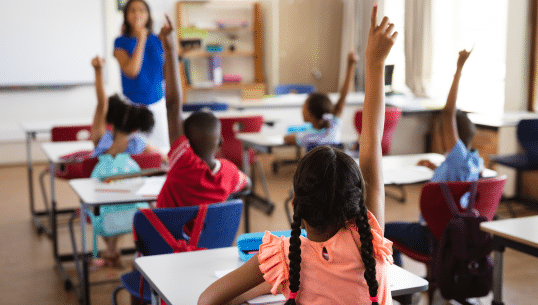
For so many teachers and students, returning after winter break can feel like the first day of school all over again. The routines, rules, and procedures that were once so familiar are now a distant memory, and it takes a conscious effort to get back into rhythm with them. For this reason, facilitating a smooth transition back into the classroom from winter break requires deliberate planning. Here are seven simple, actionable ways teachers can make this transition a positive one.
Now is a great time to initiate a service project that includes a high level of student involvement. Fun increases engagement and inspires students to reinvest in their learning. Educators can integrate service activities into the curriculum in a variety of ways. Additionally, learning through service offers students an opportunity to help others while benefiting from the experience.
We often associate the start of a new year with resolutions; however, we also know most resolutions will be broken. When we engage students in meaningful goal-setting opportunities and establish small checkpoints along the way, students are more likely to see the value of their effort and work toward obtaining the goal.
Students have not seen each other for a couple of weeks. Set aside time for them to reunite and discuss their time apart. Consider a welcome-back activity that gives students an opportunity to share their winter break experience, incorporates movement and choice, and sets the tone for an awesome rest of the year.
Try this whole-group activity: Play music while students mingle around the classroom. When the music stops, students pair up and swap stories. Repeat this activity a few times so that students get to talk to numerous classmates.
Part of the post-holiday buzz is the excitement of reconnecting!
The anxiety of getting through the academic curriculum by the end of the year creates an extra level of stress for educators, which too often transfers into increased workloads for our students. They may not be prepared emotionally or mentally for a tough assignment the moment they return. Give them a little more time to transition back into learning mode. Consider some reflection activities that can help students regroup and ease back into their learning.
After an extended absence from the classroom, students may have forgotten procedures and routines that effectively support a positive learning environment. Taking time to reestablish expectations and reteach routines helps anchor students as they learn and grow. Reviewing rules, procedures, and expectations conveys the value of these positive behaviors.
Undoubtedly, some students will have a hard time getting back into the school routine. After spending an extended time with family, having unscheduled bedtimes, and enjoying holiday festivities, it is only natural that some students may exhibit a little sadness or anger the first few days back. Reassuring your students with smiles and positivity conveys how happy you are to have them back. Use statements like “I know it’s hard not to be home with your family after spending so much time with them, and I am so excited we are here together.”
Choosing activities that students enjoyed and were successful with reestablishes their confidence in the classroom. Revisiting a fun activity, game, or song reminds students of enjoyable experiences in the classroom and encourages them to reengage. Favorite energizers, brain breaks, and interactive learning structures make learning interesting and engaging. What are those favorite activities that will ignite your class?
The winter break is often an exciting time of year. Easing back from this lengthy interruption of established classroom routines is a challenge that many teachers and students face every January. Following these simple tips can make that transition smoother so that you emerge from the extended break with a focused and motivated group of students ready to tackle the rest of the school year.
Ramona McCullough is a Responsive Classroom educational consultant and coach.